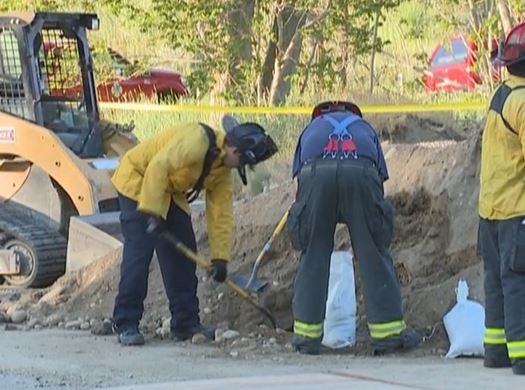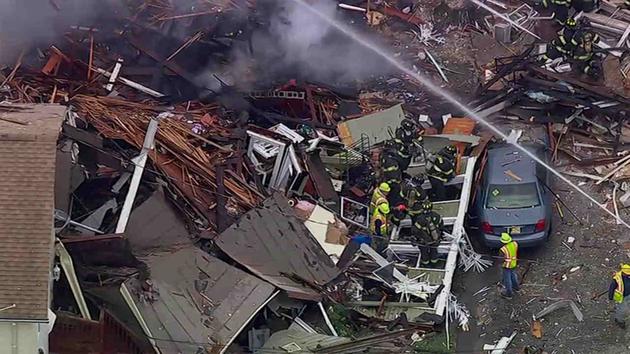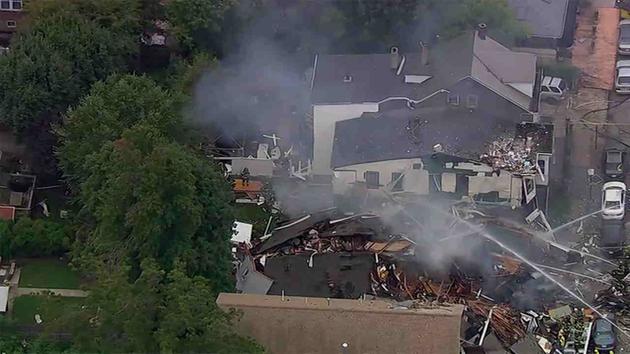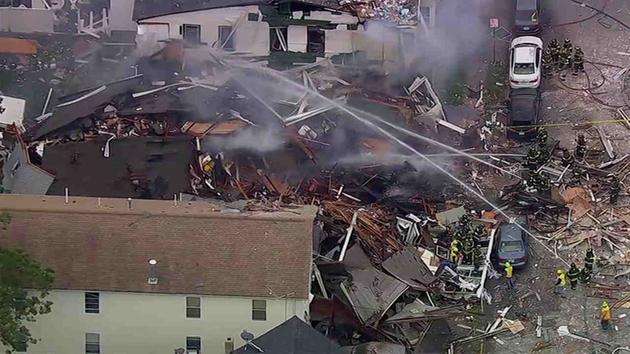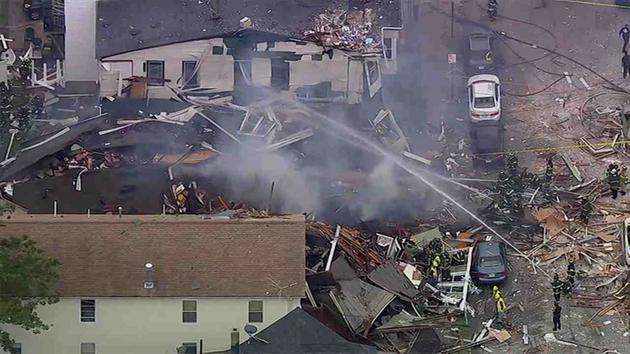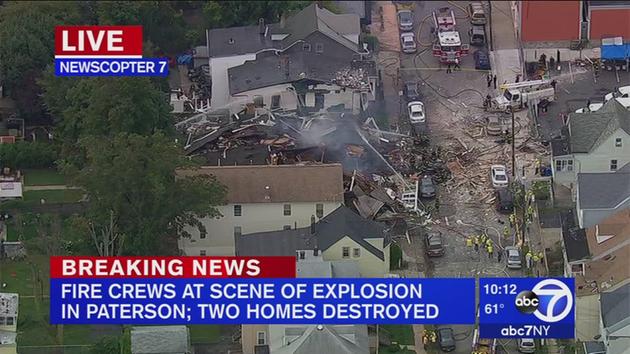U.S. Court of Appeals vacates OSHA's "Memorandum on Process Safety Management of Highly Hazardous Chemicals and Application of the Retail Exemption" for failure to comply with the procedural requirements established by the OSH Act.
"We hold only that,
insofar as OSHA does so, it must follow the notice-and-comment
procedures for standards set forth in the OSH Act."
The Occupational Safety and Health Administration failed to go through the proper rulemaking process before mandating retailers to implement new stricter storage standards for anhydrous ammonia fertilizer, the U.S. Court of Appeals for the D.C. Circuit has ruled. Agricultural Retailers Association and the Fertilizer Institute v. OSHA, No. 15-1326 (D.C. Cir. Sept. 23, 2016).
The three-judge panel said it was not ruling on the merits of the case, only that OSHA must go through a formal notice and comment rulemaking process if it wants to enforce stricter standards.
Following the 2013 explosion at the West (Texas) Fertilizer Company manufacturing facility, OSHA in July 2015 announced it would regulate retail sellers of farm fertilizer such as anhydrous ammonia under the same standards as manufacturers. The change was scheduled to take place October 1, 2016. The Agricultural Retailers Association and the Fertilizer Institute opposed the decision.
The appeals court vacated OSHA’s 2015 memo, which withdrew a long-standing exemption for “retail facilities” from strict Process Safety Management hazardous materials reporting standards for anhydrous ammonia. Now, the stricter standards are suspended, pending formal rulemaking procedures.
Steve Nelson, president of the Nebraska Farm Bureau, said of the Court’s decision, “Today’s action by the U.S. Court of Appeals for the D.C. Circuit forcing the Occupational Safety and Health Administration (OSHA) to go through a formal rulemaking process before applying stricter standards to retailers of anhydrous ammonia fertilizer is a mark on the win column for Nebraska farmers and fertilizer suppliers.”
He added, “Since OSHA reversed its long-standing policy of exempting anhydrous ammonia retail facilities from extensive federal regulations in July of 2015, Nebraska Farm Bureau and others have challenged the flawed logic OSHA used to justify additional regulations on fertilizer suppliers which ultimately would drive up fertilizer costs for Nebraska farmers and could possibly limit access to anhydrous ammonia fertilizer product.”
Nelson also said, “The fertilizer industry estimates the rule could cost fertilizer suppliers in the neighborhood of $100,000 per facility which would ultimately translate to higher costs for farmers. Today’s court action will force OSHA to go back to the drawing board to justify their actions, and hopefully mark the beginning of the end for this unwarranted regulatory burden.”
=======
United States Court of Appeals
FOR THE DISTRICT OF COLUMBIA CIRCUIT
Submitted May 16, 2016 Decided September 23, 2016
No. 15-1326
AGRICULTURAL RETAILERS ASSOCIATION AND THE FERTILIZER INSTITUTE,
PETITIONERS
v.
UNITED STATES DEPARTMENT OF LABOR AND OCCUPATIONAL SAFETY &HEALTH ADMINISTRATION,
RESPONDENTS
Consolidated with 15-1340
On Petitions for Review of a Memorandum
of the Occupational Safety & Health Administration
Gary H. Baise, Stewart D. Fried, Chris S. Leason, Mark C. Dangerfield, and Andrew E. Dudley were on the joint briefs for petitioners. Anson M. Keller Sr. entered an appearance.
Ann S. Rosenthal, Associate Solicitor, Occupational Safety & Health Administration, Charles F. James, Counsel, U.S. Department of Labor, and Lauren S. Goodman, Senior Attorney, U.S. Department of Labor, were on the brief for respondents.
Randy S. Rabinowitz was on the brief for movant-intervenor for respondents.
Before: ROGERS, SRINIVASAN and MILLETT, Circuit Judges.
Opinion for the Court filed by Circuit Judge SRINIVASAN.
SRINIVASAN, Circuit Judge: The Occupational Safety and Health Administration, part of the Department of Labor, aims to secure “safe and healthful working conditions” for the Nation’s workers. 29 U.S.C. § 651(b). To that end, OSHA in 1992 issued the so-called Process Safety Management Standard to protect the safety of those who work with or near highly hazardous chemicals. From its inception, the standard has exempted retail facilities from its requirements. The exemption rests on an assumption that the retail setting involves diminished risks of a substantial release of toxic chemicals. Recently, after a catastrophic chemical explosion at a Texas fertilizer company that qualified as an exempt retail facility, OSHA narrowed the scope of the retail-facility exemption so that the safety standard’s requirements would now apply to formerly exempt facilities like the Texas plant.
The question we confront is whether, when OSHA narrowed the scope of the exemption for retail facilities, the agency issued a safety “standard” within the meaning of the Occupational Safety and Health Act (OSH Act). If so, we have jurisdiction to review OSHA’s action, and the OSH Act would have required the agency to adhere to procedural notice-and-comment requirements, which it concededly did not do. If, however, OSHA’s action did not amount to issuance of a “standard,” we would lack jurisdiction to review it and the OSH Act would have imposed no obligation to follow notice-and-comment procedures.
Under our decisions, when an action by OSHA corrects a particular hazard, as opposed to adjusting procedures for detection or enforcement, it amounts to a “standard.” Applying that understanding, we conclude that the agency’s narrowing of the substantive scope of the exemption for retail facilities qualified as issuance of a “standard.” We therefore have jurisdiction, and OSHA was required to adhere to notice-and-comment procedures. Consequently, we grant the petitions for review and vacate OSHA’s action.
I.
In 1992, OSHA promulgated the Process Safety Management (PSM) Standard in an effort to “provide safe and healthful employment and places of employment for employees in industries which have processes involving highly hazardous chemicals.” Process Safety Management of Highly Hazardous Chemicals; Explosives and Blasting Agents, 57 Fed. Reg. 6356, 6359 (Feb. 24, 1992), codified at 29 C.F.R. § 1910.119 (2016). The PSM Standard “contains requirements for preventing or minimizing the consequences of catastrophic releases of toxic, reactive, flammable, or explosive chemicals.” 29 C.F.R. § 1910.119.
From the outset, OSHA exempted “[r]etail facilities” from the requirements of the PSM Standard. Id. § 1910.119(a)(2)(i). The exemption, OSHA explained in the preamble of the final standard, was rooted in an understanding that “chemicals in retail facilities are in small volume packages, containers and allotments, making a large release [of toxic chemicals] unlikely.” 57 Fed. Reg. at 6369. OSHA identified “gasoline stations” as prototypical examples of retail facilities. Id. Shortly after promulgating the PSM Standard, OSHA issued a letter defining an exempt retail facility as “an establishment . . . at which more than half of the income is obtained from direct sales to end users.” See Letter from Patricia K. Clark, Dir. of Enf’t Programs, OSHA, to Gary Myers, President, The Fertilizer Inst. (June 19, 1992). The “50 percent test” remained the rule for more than two decades.
In April 2013, a catastrophic chemical explosion at a fertilizer company in West, Texas, resulted in the deaths of 15 persons and injured many others. Although the company stored large quantities of a highly hazardous chemical (anhydrous ammonia) for bulk distribution as fertilizer to farmers, it had been exempt from the PSM Standard under the 50 percent test for retail facilities. That test had enabled establishments to claim the exemption even if they stored large amounts of hazardous chemicals for distribution in wholesale quantities to commercial end users (including farmers), as long as the distributions went directly to the end users.
After the explosion at the West, Texas, fertilizer facility, President Obama issued an executive order that, among other things, directed the Secretary of Labor to “identify any changes that need to be made in the retail . . . exemption[] in the PSM Standard” so as to “meet the goal of preventing major chemical accidents.” Improving Chemical Facility Safety and Security, 78 Fed. Reg. 48029, 48032 (Aug. 1, 2013). OSHA responded in 2015 by issuing the Memorandum at issue in this case. OSHA, Memorandum on Process Safety Management of Highly Hazardous Chemicals and Application of the Retail Exemption (29 C.F.R. § 1910.119(a)(2)(i)), July 22, 2015.
The Memorandum “rescind[ed] all prior policy documents, letters of interpretation, and memoranda related to the retail exemption and the 50 percent test.” Id. OSHA explained that the “50 percent test allows employers who sell or distribute large, bulk quantities of highly hazardous chemicals directly to end consumers to claim the exemption, even if the end users are themselves commercial establishments.” Id. That result was “directly contrary to OSHA’s original intent,” i.e., “to exclude retail facilities from PSM coverage because the small container, package, or allotment sizes of the chemicals typically found at these facilities do not present the same safety hazards as establishments that handle large, bulk quantities of materials.” Id.
Concluding that the retail exemption “should never have been interpreted to cover facilities engaged in distinctly wholesale activities,” OSHA announced that retail facilities would instead be defined by a Department of Commerce manual classifying types of businesses. Id. Under that definition, retail facilities must be “organized to sell merchandise in small quantities to the general public.” Id. Because farm supply establishments like the West, Texas, facility sell chemical fertilizers in bulk to farmers, they fall outside the revised definition of retail facilities. Id. Under the new definition, those facilities thus would become subject to the PSM Standard’s requirements for managing highly hazardous chemicals.
II.
The Agricultural Retailers Association, the Fertilizer Institute, and a number of individual businesses brought petitions for review in this court to challenge OSHA’s narrowed definition of retail facilities. According to petitioners, the OSH Act required the agency to adhere to notice-and-comment procedures in promulgating its new definition. We agree with petitioners.
The OSH Act authorizes the Secretary of Labor, through OSHA, to promulgate “occupational safety [and] health standard[s].” 29 U.S.C. § 655(b). The Act provides for pre-enforcement review in the courts of appeals of any such “standard” issued by OSHA. Id. § 655(f). The Act also authorizes the promulgation of “regulation[s]” (and other rules falling short of “standards”), which are governed by a different means of judicial review: challenges to regulations are brought under the Administrative Procedure Act (APA), which calls for initial review in federal district court rather than in a court of appeals. Id. § 657(c)(1); see also Edison Elec. Inst. v. OSHA, 411 F.3d 272, 277 (D.C. Cir. 2005); Workplace Health & Safety Council v. Reich, 56 F.3d 1465, 1467 (D.C. Cir. 1995).
The OSH Act provides for distinct treatment of “standards” in another pertinent respect as well. When promulgating or modifying a “standard,” OSHA must adhere to notice-and-comment procedures set forth in the OSH Act. 29 U.S.C. § 655(b). OSHA concedes that, when it promulgated its Memorandum redefining “retail facility,” it did not satisfy the procedural requirements for standards. The agency instead argues that the Memorandum did not issue or modify a standard. In the agency’s view, the Memorandum only interpreted an existing standard, and it therefore was subject neither to the procedural requirements set out in the OSH Act, id., nor to direct review in this court under that Act, id. § 655(f).
The existence of jurisdiction in this court, as well as the applicability of the OSH Act’s notice-and-comment procedures, both turn on the same question: whether OSHA’s Memorandum amounted to issuance (or modification) of an “occupational safety and health standard.” The OSH Act defines an “occupational safety and health standard” as “a standard which requires conditions, or the adoption or use of one or more practices, means, methods, operations, or processes, reasonably necessary or appropriate to provide safe or healthful employment and places of employment.” Id. § 652(8).
Our decisions construing that definition have established a framework for differentiating between OSHA standards and regulations. A standard within the meaning of that definition is “a remedial measure addressed to a specific and already identified hazard, not a purely administrative effort designed to uncover violations of the Act and discover unknown dangers.” Workplace Health & Safety Council, 56 F.3d at 1468 (quoting La. Chem. Ass’n v. Bingham, 657 F.2d 777, 782 (5th Cir. 1981)). Standards, that is, are designed for “correction rather than mere inquiry into possible hazards.” Id. They focus on “correct[ing] a particular significant risk,” not on “general enforcement.” Id. (quotation and internal quotation marks omitted).
In Workplace Health & Safety Council, we applied that understanding to find that a rule requiring employers to report workplace deaths and hospitalizations was a regulation rather than a standard. 56 F.3d at 1468. The “basic function of the rule [was] administrative,” in that it principally served to enable “collect[ing] information about unknown hazards.” Id. We distinguished “information-gathering” measures of that kind from the “correction of a particular significant risk.” Id. (quotation and internal quotation marks omitted).
When we later applied the same framework in Chamber of Commerce of the United States v. U.S. Department of Labor, 174 F.3d 206 (D.C. Cir. 1999), we reached the opposite outcome with regard to the OSHA rule at issue in that case. We determined that a compliance program subjecting businesses to extra inspections if they did not engage in specified safety measures amounted to a standard rather than a regulation.
That program aimed at “correcting, rather than merely uncovering,” workplace safety hazards. Id. at 210. It therefore could not “be described as merely an enforcement or detection procedure.” Id. (quotation and internal quotation marks omitted). Whereas the rule held to be a regulation in Workplace Health & Safety Council was “procedural,” the “basic function of the rule” in Chamber of Commerce was “substantive,” in that it “impose[d] upon employers new,” and “more demanding,” “safety standards” than those in existence beforehand. Id. at 210-11.
Under the principles set forth in those decisions, we conclude that OSHA’s new definition of a retail facility, like the compliance program in Chamber of Commerce, amounts to a standard. The “basic function” of OSHA’s new definition is to address a “particular significant risk,” id. at 209: the risk associated with storing large quantities of highly hazardous chemicals for distribution to end users in bulk quantities, as had been the case at the West, Texas, fertilizer company. OSHA’s Memorandum aims not just to gather data about that risk or otherwise serve a general detection or enforcement function, but instead to correct the risk by subjecting facilities such as farm supply companies to the preventative measures in the PSM Standard. OSHA estimates that its revised definition would subject up to 4,800 facilities to “new,” and necessarily “more demanding,” substantive standards for the management of highly hazardous chemicals. Id. at 211.
Of course, the Memorandum itself does not require new preventative measures of its own accord; it does so in conjunction with the PSM Standard. But we do not look at the Memorandum in strict isolation. We consider the Memorandum’s “practical effect,” not “its formal characteristics.” Id. at 209. And the essential effect and object of the Memorandum is to expand the substantive reach of the PSM Standard by narrowing an exemption from that standard. As OSHA describes the measure, it aims to eliminate “policy and regulatory gaps” so as to help “prevent incidents like the West Fertilizer explosion.” OSHA, Questions and Answers—PSM Retail Exemption Policy, July 22, 2015. By redefining retail facilities, the Memorandum, in purpose and effect, subjects a substantial number of businesses previously classified as exempt retail facilities to additional safety standards in order to address a “particular significant risk.” Given those specific circumstances, the measure, under our decisions, qualifies as a standard within the meaning of the OSH Act.
OSHA argues that the Memorandum cannot be a standard because it would constitute an interpretive rule under the APA. But nothing in the OSH Act or APA establishes that the standard/non-standard distinction under the OSH Act must directly track the legislative/interpretive rule distinction under the APA. The OSH Act and the APA prescribe different procedural requirements, and those requirements do not necessarily apply to the same subset of rules. Unlike some other statutes, the OSH Act does not adopt the “interpretive rule” terminology, but instead uses a vocabulary distinct from the APA’s. Compare 29 U.S.C. § 655, with 42 U.S.C. § 1395hh(c) (using the term “interpretive rules” in the Medicare Act). And petitioners’ principal submission is that they are entitled to relief under the OSH Act’s governing standards, a result that, in their view, renders the APA irrelevant. Petitioners’ Reply Br. at 1-3.
We thus need not decide whether the rule at issue here would constitute an interpretive rule for purposes of the APA. Because the Memorandum amounts to a standard within the meaning of the OSH Act, we have jurisdiction to review it and to vacate it for failure to comply with the procedural requirements established by that Act. Of course, nothing in our decision necessarily calls into question the substance of OSHA’s decision to narrow the exemption for retail facilities and correspondingly to expand the scope of the PSM Standard. We hold only that, insofar as OSHA does so, it must follow the notice-and-comment procedures for standards set forth in the OSH Act.
Finally, we consider the motion of the United Steel, Paper and Forestry, Rubber, Manufacturing, Energy, Allied Industrial and Service Workers International Union (the Union) to intervene in support of OSHA. Mot. to Intervene Out of Time Filed on Behalf of [the Union], Nov. 5, 2015. We deny the motion because the Union has failed to establish its standing to intervene. The Union submitted a declaration saying that certain Union members “may” be affected by OSHA’s action insofar as there are members whose employers previously fit within the retail facility exemption under the 50 percent rule but would no longer do so under the Memorandum’s revised definition. Decl. of Michael J. Wright ¶¶ 4-5 (attachment to Br. of Union). But because nothing in the Union’s declaration establishes that the Union does have such members, the Union has failed to demonstrate standing. See Summers v. Earth Island Inst., 555 U.S. 488, 498 (2009). Although we deny the Union’s motion to intervene for that reason, we grant the Union’s alternative request to accord it amicus curiae status, and we thus have given full consideration to the Union’s arguments. See Rio Grande Pipeline Co. v. FERC, 178 F.3d 533, 539 (D.C. Cir. 1999).
* * * * *
For the foregoing reasons, we grant the petitions for review and vacate OSHA’s Memorandum for failure to abide by the OSH Act’s procedural requirements. We also deny the Union’s motion to intervene but grant it amicus status.
So ordered.




